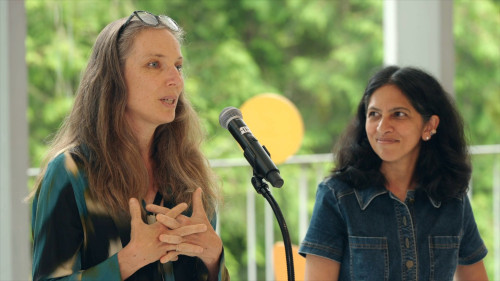I develop predictive models to direct the assembly of liquids into solids with particular shapes and functions. This gray area between fluids that flow freely and solids that deform under load has uncanny similarities with the practices of sculptors, designers and architects. While processes vary widely depending on the given creative practice, artistic inquiry provides a space to ask different questions about materials that might fall outside the known set in engineering. That’s why I value collaborations with artists and am fascinated by the expressionistic representations of science they develop in their work.
Pierre-Thomas Brun is an engineer best known for his work investigating liquids capable of solidification, such as elastomers, rubber and glass. His curiosity-driven, interdisciplinary research into soft materials’ fluid and elastic processes is at the cusp of fluid mechanics, elasticity, nonlinear dynamics and design.
Combining direct observation, analog experiments and theoretical modeling, Pierre-Thomas creates predictive models that rationalize the physics at play in problems ranging from natural phenomena to engineering. His research inspires and informs the designs of new technologies and connects to critical societal challenges, like developing new manufacturing paradigms and facilitating the distribution of soft robots into our daily lives.
The recipient of the 2020 National Science Foundation CAREER Award and the 2023 American Physical Society’s Early Career Award in Soft Matter Research, Pierre-Thomas and his work frequently gain mainstream attention. In 2014, his research into the math underlying cowboy rope tricks was featured in The New York Times and on the BBC.
As an Assistant Professor in the Department of Chemical and Biological Engineering at Princeton University, Pierre-Thomas leads the Liquids and Elasticity Laboratory (LElab). Before joining Princeton, he was an instructor in applied mathematics at the Massachusetts Institute of Technology.
